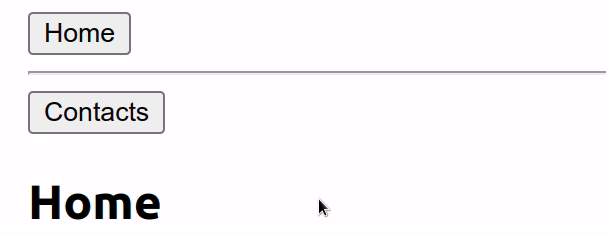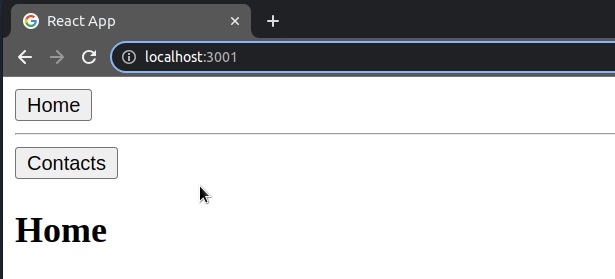Redirect to another Page on Button click in React
Last updated: Apr 7, 2024
Reading time·3 min

# Redirect to another page on button click in React
To redirect to another page on button click in React:
- Use the
useNavigate()hook, e.g.const navigate = useNavigate();. - Call the
navigate()function, passing it the path -navigate('/about'). - The
navigate()function lets us navigate programmatically.
import {Routes, Route, useNavigate} from 'react-router-dom'; export default function App() { const navigate = useNavigate(); const navigateToContacts = () => { // 👇️ Navigate to /contacts navigate('/contacts'); }; const navigateHome = () => { // 👇️ Navigate to / navigate('/'); }; return ( <div> <div> <button onClick={navigateHome}>Home</button> <hr /> <button onClick={navigateToContacts}>Contacts</button> <Routes> <Route path="/contacts" element={<Contacts />} /> <Route path="/" element={<Home />} /> </Routes> </div> </div> ); } function Home() { return <h2>Home</h2>; } function Contacts() { return <h2>Contacts</h2>; }

The useNavigate hook returns a function that lets us navigate programmatically, e.g. after a form is submitted or a button is clicked.
navigate function can be passed a delta, e.g. -1 to go one page back, 1 to go one page forward, or a path -navigate('/contacts').The function also takes an options object.
const navigateToContacts = () => { navigate('/contacts', {replace: true}); };
When the replace property on the options object is set to true, the
current entry in the history stack gets replaced with the new one.
For example, this is useful when a user logs in because you don't want them to be able to click the back button and get back to the login page.
It is also useful if you have a route that redirects users to a different page, because you don't want users to click the back button and get redirected again.
# Wrap your React application in a Router component
To use the useNavigate hook in your application, make sure the App component
in your index.js file is wrapped in a Router.
import {createRoot} from 'react-dom/client'; import App from './App'; import {BrowserRouter as Router} from 'react-router-dom'; const rootElement = document.getElementById('root'); const root = createRoot(rootElement); // 👇️ Wrap the App in a Router root.render( <Router> <App /> </Router> );

Router component is in your index.js file because that's the entry point of your React application.Once your entire app is wrapped with a Router component, you can use any of
the hooks from the React router package anywhere in your components.
# Additional Resources
You can learn more about the related topics by checking out the following tutorials:
- Redirect on form submit using React Router
- How to Redirect to an Internal/External URL in React
- Set a Default route with redirect using React Router
- Get the current URL and Route in React and React Router
- How to remove query params using React router
- Get the ID from a URL in React and React Router
- How to Go back to the previous Page with React Router
- Handling 404 page not found in React Router
- Programmatically update query params in React router
- How to change the favicon in React.js
- How to download a File in React.js (local or remote file)
- Error with Permissions-Policy header: Unrecognized feature

